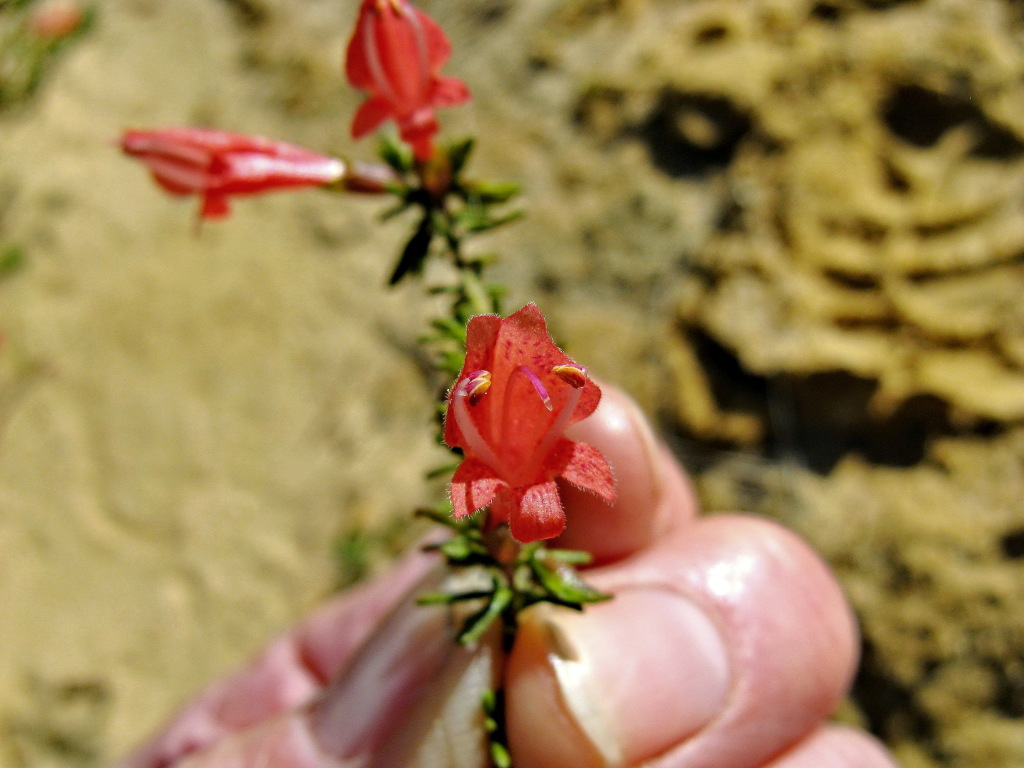Prostanthera aspalathoides
A.Cunn. ex Benth. Scarlet Mint-bushSmall shrub, 0.3–1 m high; branches c. terete, densely covered with short hairs, glandular. Leaves linear-oblong, -elliptic or -obovate, 1.5–6(–10) mm long, 0.5–1 mm wide, up to 6(–10) times as long as wide, glabrous or sparsely tomentose with glandular, terete to compressed-terete hairs, base slightly attenuate, margin entire, recurved when lamina subterete, apex obtuse to rounded; petiole 0–0.5 mm long. Flowers appearing axillary; bracteoles 2–3 mm long. Calyx 5–7 mm long, tube 3–4 mm long, lobes 2–3 mm long; corolla 10–20 mm long, red, pink-red, orange, rarely yellow, tube 8–11 mm long; anther appendage absent. Flowers spring.
LoM, MuM, Wim, VRiv, MuF, Gold, GGr, NIS, HSF. Also SA, Qld, NSW. In Victoria locally common in open mallee communities of the north-west, extending to Box-Ironbark forests and whipstick mallee communities of north-central areas (e.g. Bendigo, Rushworth), on red sandy loams overlying sandstone and shales, or in shallow calcareous soils, often with superficial ironstone pebbles ('buckshot gravel').
Conn, B.J. (1999). Lamiaceae. In: Walsh, N.G.; Entwisle, T.J., Flora of Victoria Vol. 4, Cornaceae to Asteraceae, pp. 418–459. Inkata Press, Melbourne.
 Spinning
Spinning

